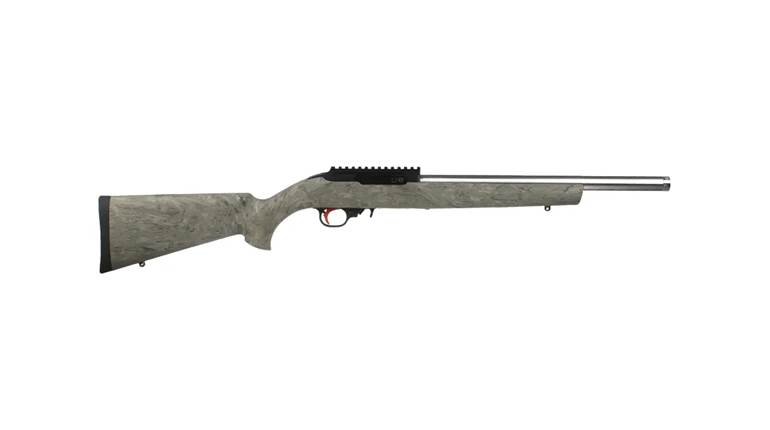
MKS Supply is an American distributor that's been in business for three decades. The company is best-known for providing dealers with products from Hi-Point Firearms and Inland Mfg. Last year, MKS decided it was time to expand its catalog to include affordably priced ammunition. It formed a new importation, distribution and marketing relationship with Barnaul Ammunition, one of the largest manufacturers in Russia.

The Barnaul brand is not as well-known here in the U.S. as it is in Europe. But if you're hearing the name for the first time, be assured that this is not some wet-behind-the-ears manufacturer. With decades of production experience under its belt, this company's history stems back to 19th-century Saint Petersburg, where one of the country's first cartridge plants was established.

Dubbed Arsenal P, it provided the Russian military with ammunition during World War I. During World War II, the factory was moved to Barnaul, Russia, where it produced more than 1.8 billion cartridges during the conflict. Today, Barnaul offers around 200 commercial varieties of practice grade, hunting and self-defense ammunition in addition to its military contracts.

All of the ammunition this company manufactures employs cartridge cases formed from mild steel instead of brass or aluminum. The steel is treated with various corrosion-resistant finishes, including lacquer, polymer coating, zinc coating and brass washing. The company's bullet options include tried-and-true full-metal jacket, soft point and hollow point designs.

In fact, if you've discovered a variety of steel-cased ammunition you like, there's a distinct possibly that it was manufactured in Russia by Barnaul for one of the many private labels the company supplies. But now MKS Supply is determined to pull back the curtain and give American shooting sports enthusiasts an opportunity to get to know this affordably priced, steel-cased ammunition by the name of the company that makes it.
This brings us to the great cartridge case debate. Are steel cases as good and reliable as brass? Yes, they can be. It all boils down to how well a given cartridge fits a particular firearm. Each individual firearm's chamber has minute dimensional differences. No two are exactly alike.

Then you have to take the action's tolerances into consideration. Some are tighter while others are more forgiving. Last but not least, the cartridges themselves are built to a particular set of specifications. In short, cartridge to gun fit is not all that different than hand to glove or foot to shoe fit. Both can be quality options but not be a good fit for each other.
With that being said, there are plenty of firearm makes and models that run reliably when loaded with steel-cased ammunition. For those who are lucky enough to own these models, steel-cased cartridges can provide a measurable reduction in ammunition costs. But how do you if a given load is going function reliably in your gun? A trip to the range with just two or three 20-round boxes should be enough to find out if a particular cartridge and your gun are going to get along.

To find out how well Barnaul ammunition performs, I requested three different rifle calibers that I enjoy working with including 7.62x54R, 7.62x39 mm and .223 Rem. The bullet types were selected to fill particular shooting roles with rifles that would push the cartridges' limits in one way or another.
Many of the Americans who have experience with the 130-year-old 7.62x54R rimmed rifle round know it as the cartridge that powers surplus Mosin-Nagant bolt-action rifles. The 7.62x54R has a rich history and provides downrange performance comparable to the venerable .308 Win. When topped off with expanding bullets, like the 203-gr. boattail soft point tested here, it's a viable option for hunting medium and large game.

Although bolt-action rifles can be counted on to cycle most ammunition reliably, semi-auto rifles tend to be more demanding. That's why I used a 23.5" barrel Molot Vepr, which is based on the AK-47 design, as a launching platform. Poor cartridge to chamber fit can be quickly identified in a semi-auto by frequent failures to feed and eject properly.
I'm happy to report that both the ammunition and the rifle ran reliably throughout the testing process. When fired with four other loads during a previous range test, the Vepr tapped out 5-shot groups of 2" to 2.25" at 100-yards. The Barnaul 203-gr. soft point produced similar results with an average group size of 2.17".
For the 7.62x39mm, I was looking for an affordable practice-grade round for punching holes in targets and ringing steel plates on the shooting range. Barnaul's 123-gr. full-metal jacket load was just the ticket. It was paired with a hybrid AR-15.

This 16" barrel, gas-impingement operated semi-auto has a lower receiver that's been modified to accept AK-47 pattern magazines. It's a gun and ammunition combination that's handy and fun to shoot. The KS-47 printed an average group size of 1.91" with the Barnaul cartridge while other loads yielded groups around 2.5" in size. And it operated flawlessly, to boot!
I recently worked with a top-quality AR-15 upper assembly configured by Luth-AR for varminting. When attached to a target shooting lower, the 24" stainless-steel bull barrel chambered in .223 Rem. is a real tack-driver. Firing premium varmint hunting loads resulted in groups around 0.75" to 0.85" in size. But these rounds also happen to cost $1.10 to $1.15 per shot.

When participating in a hunt that calls for high round counts, such as prairie dogs or ground squirrels, higher ammunition costs can be prohibitive. With this in mind, I was curious to see how the Barnaul 55-gr. boattail soft point would perform with this upper receiver. The cartridges proved to be utterly reliable with an average group size of 1.01".
Although the group sizes were slightly larger, the Barnaul cartridge was available for $0.28 per shot at the time of testing. Is a 0.16" gain in group size worth approximately a 76-percent reduction in ammunition cost? Each individual’s shooting requirements are different, but for my needs, this is a winning combination.

At the end of the testing process, hundreds of rounds of Barnaul ammunition had been fired through multiple platforms without any malfunctions. That alone would make this steel cased ammunition a good investment. But considering the respectable levels of accuracy that accompany the lower prices, Barnaul is a real bargain. For more information, visit mkssupply.com or barnaulammo.com.






































